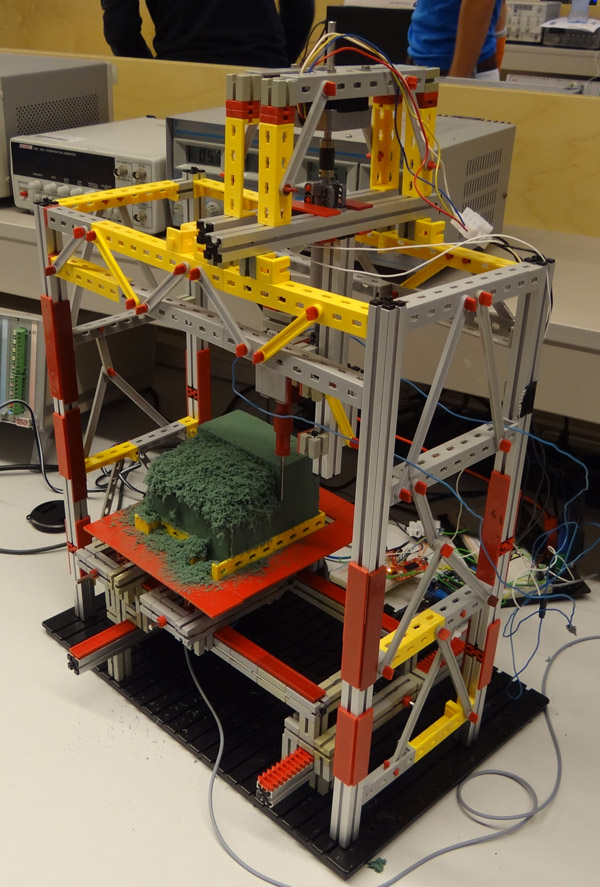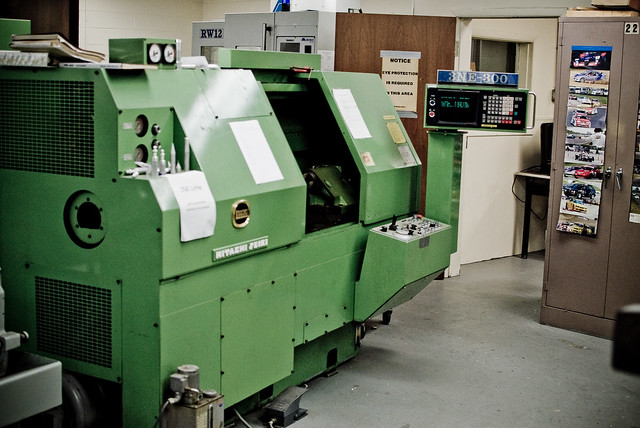
Hitachi-Seiki 3NE-300 Lathe, circa 1980
I’m currently taking some mechanical engineering classes at County College of Morris (CCM) in Randolph, NJ. Among the equipment in the machine shop is this mean, green Hitachi-Seiki CNC Lathe, a neat piece of industrial equipment from the late 70′s/early 80′s.
Currently, there are two ways to program the machine. You can program it manually, by entering in codes on the keypad:
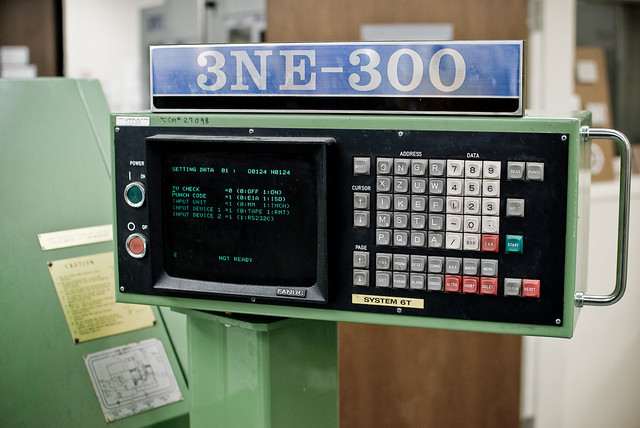
3NE-300 control panel
-OR- you can get your Jacquard on and write a program on punched tape:
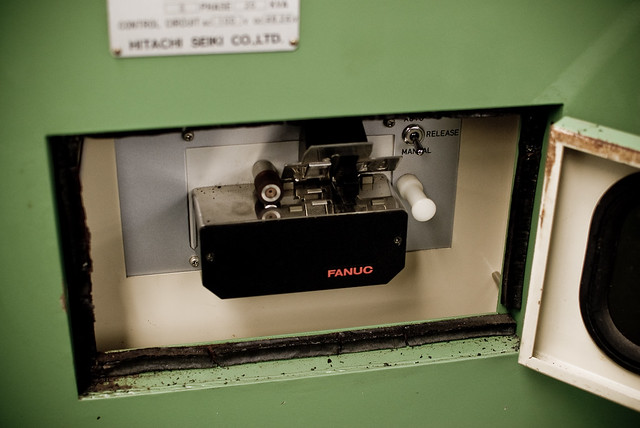
FANUC punched tape reader
Naturally, for ease of use, the punched tape reader is on the back of the machine. *sigh*
Fortunately, there is a third way to get program code into the controller. This is via an RS-232C port:
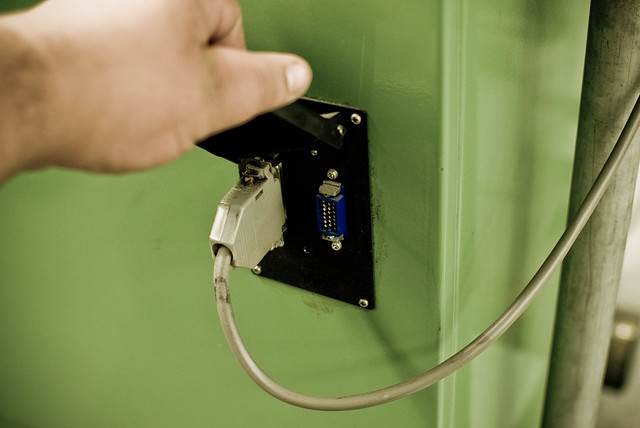
Serial port: a DB-25 RS-232-C port and an MR-20 "HONDA" connector
The obvious question is: why not just hook the serial port up to a computer? Well, due to the logistics of the shop, it’s not feasible to have a computer in the immediate vicinity of the machine. In order to hook it up to the nearest computer, the required cable would be at least 25 feet long. In practice, this translates to a 600-baud signaling rate, as there is a lot of EM interference in the shop, due to motors, fluorescent lights, etc. It’s much easier to simply have a small “black box” that can load the program from modern media like an SD card.
My plan is to build a circuit based around an Arduino, which will read an NC file (ASCII text) from an SD card and send it to the machine over the serial port. I plan to use the following hardware:
- Arduino Mega – the brains of the operation. To be honest, I probably won’t need the extra pins of the Mega, but with the full SD library, the serial library and the extensive menu system I plan to write, I need the extra program memory.
- LCD with Adafruit i2c/SPI backpack – for the display (file menu, load progress, etc.)
- Adafruit Logger Shield – for reading from and writing to the SD card.
- CuteDigi RS232 Shield – not entirely sure about this one yet. I may just get an Adafruit protoshield and wire up a DB-25 port to it.
- Hammond 1550D enclosure – with milled openings for the SD card, LCD and buttons.
The controller for the lathe is a FANUC 6T-B. While rather primitive by today’s standards, in it’s day it was a top of the line industrial controller, and FANUC is still the standard. It’s pretty much indestructible too, which is a bonus, because it means I won’t end up scrambling the brains on a $20,000 piece of equipment.
More to come as I work on this project over winter break. I’m hoping to get the electronics soon and start work on the menu and input systems. By the time I get back to school in January, it’ll (hopefully) be ready to interface with the FANUC controller.









